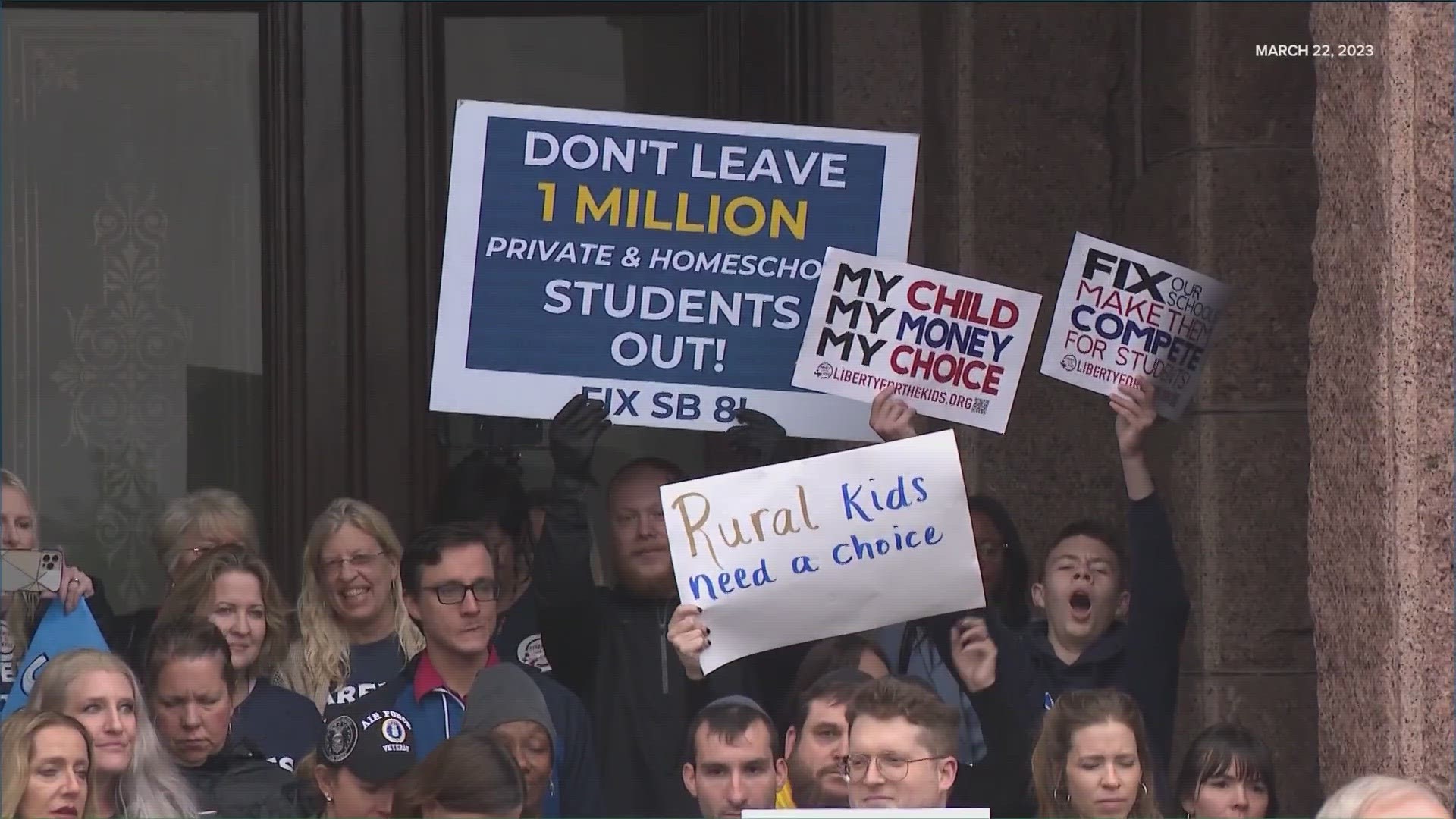AUSTIN, Texas — THE TEXAS TRIBUNE - Gov. Greg Abbott has made “school choice” one of his highest priorities this year, highlighting it in his State of the State address and throwing his weight behind education savings accounts, which would allow parents to opt out of their local school districts and receive state money to school their children directly.
“That will give all parents the ability to choose the best education option for their child,” he said during a parental rights event in Corpus Christi in January, where he announced his support for such a program. “The bottom line is this: This is really about freedom.”
Public education advocates and rural lawmakers have long opposed the voucher programs most often associated with "school choice,” saying they siphon funds away from public schools. But supporters of education savings accounts, which have spread across the country in the last decade, see them as their best way to harness conservative parents’ discontent with public schools and expand “school choice” in the state.
Here’s what you need to know about education savings accounts.
Education savings accounts in Texas
What is an education savings account?
Education savings accounts are essentially taxpayer-supported bank accounts for parents who remove their children from the public education system. Those parents get state money up front to pay for their educational expenses, like private school tuition, online schooling or private tutors. In most cases, the state manages these accounts.
There are several education savings account proposals under consideration by the Texas Legislature this session, but Senate Bill 8 by Sen. Brandon Creighton, R-Conroe, has been designated as a priority bill. SB 8 would give participants up to $8,000 per student each year to be used on private school tuition, tutors, uniforms and other approved educational expenses. The program would be open to virtually every K-12 student and would not accept those already in private schools.
Creighton’s proposal, like most education savings account programs in other states, does not require private schools or education services vendors to report test results or how they’re spending taxpayers’ money.
Another education savings accounts proposal, Senate Bill 176 by Sen. Mayes Middleton, R-Galveston, would allow the money that parents get to roll over on a year-to-year basis and could be used to help families pay for higher education. The funds for the program could come from both taxpayer money and donations.
Middleton’s bill has not yet been voted out of the Senate Committee on Education.
Supporters of education savings accounts, such as Abbott and Lt. Gov. Dan Patrick, say the state should let parents choose what type of education is best for their children. Opponents say it would take money away from an already underfunded public education system.
Over the last couple of years, education savings accounts have gained popularity among those looking to expand “school choice” across the country.
Why is it called a “school choice” program?
The term “school choice” embodies a host of schooling options and is typically used when talking about alternatives to public education, like charter schools.
The modern “school choice” movement can trace its origins to the aftermath of the U.S. Supreme Court’s 1954 Brown v. Board of Education decision, which mandated the desegregation of public schools. Some white parents did not want their children to attend desegregated schools, and in response, some states like Virginia devised voucher programs, which give families taxpayer dollars to send their children to private schools.
Education savings accounts started about a decade ago, but they accomplish goals similar to vouchers, said Joshua Cowen, an education policy professor at Michigan State University.
“The plan that Abbott is proposing really just resembles a typical voucher program, which is essentially taxpayer-funded tuition,” Cowen said. “The difference between an [education savings account] and a voucher program is essentially all these other expenses could be tacked on to it or used in place of it.”
Where else do they exist?
Last year, taxpayers in about 30 states provided about $5 billion to send kids to private schools, according to Scott Jensen, senior strategist for the American Federation for Children, an organization geared toward expanding voucher-like programs across the country.
Ten states have enacted education savings account programs, and about 20 others, including Texas, are in the legislative process to get a similar program approved.
While most of the existing programs are limited in scope, Arizona expanded its education savings accounts last year, and they are now open to almost every child. The only requirements are that the child must be at least 5 years old and that parents must show proof that they live in the state.
Arizona created its education savings account program in 2011. The decision came after the state’s supreme court ruled that traditional vouchers were unconstitutional because they could be used to pay religious schools, essentially amounting to a transfer of state funds to religious institutions.
But education savings accounts were able to get around this by giving the state funds directly to parents and letting them use the money for a myriad of educational expenses, not just religious school tuition.
Is “school choice” a new idea in Texas?
The state Senate passed an education savings account bill similar to Middleton’s in 2017, but it did not have the same support that Abbott has put behind the issue this year. The measure did not pass at the House Committee on Public Education.
But other “school choice” options have long existed in the state.
Texas has had free charter schools since 1996, and the state has some of the most lenient home-school laws in the country. Parents can also send their child to a magnet school, a public school with a specialized curriculum that draws students from across districts.
In addition, many school districts have a process for students to transfer out of the schools in their area and into a different district.

